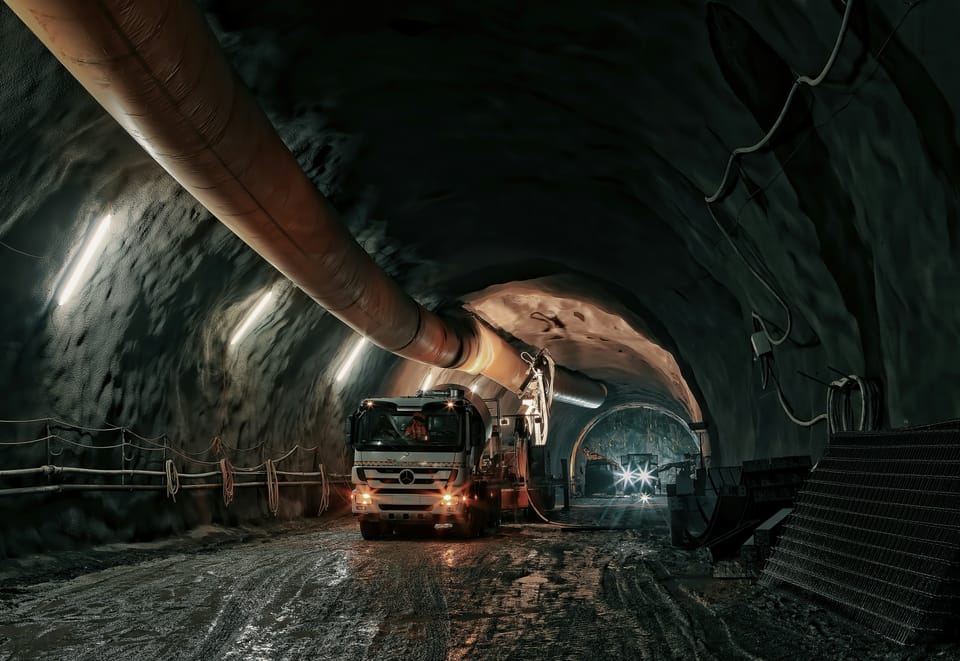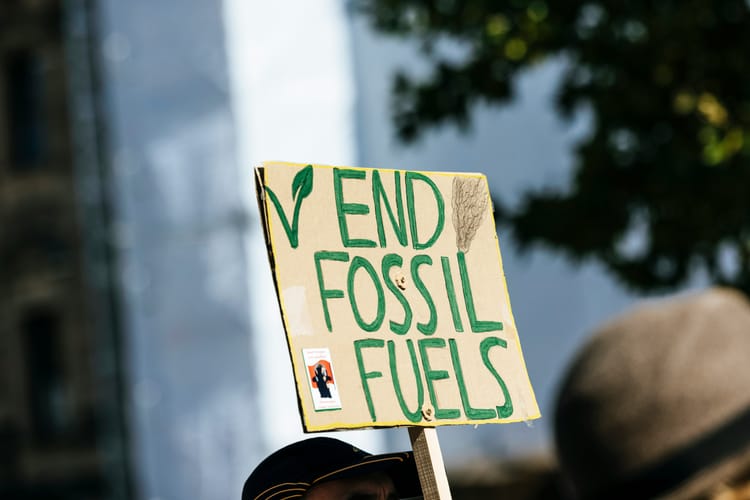What is mining doing to not become the new fossil fuels?

The shift to renewable energy and electrification is (slowly) reducing the importance of fossil fuels in our modern world – but that transformation is highly reliant on another extractive and polluting activity. As mining demand ramps up, how is the industry ensuring it doesn’t become the next problem to solve on the way to a sustainable economy?
The energy transition is accelerating: just this week, the International Energy Agency (IEA) predicted that global renewable capacity will double in the next five years – equivalent to adding the current renewable power generation of China, the EU and Japan combined to the global mix.
And in its annual Energy Transition Outlook, DNV forecast that even with recent fossil-first policies in the US, the world is on track to achieve a 51-49 split between fossil fuels and non-fossil energy by 2050.
At the same time, electric vehicle adoption is breaking new records, with EVs expected to reach 25% market share globally this year. And artificial intelligence is powering energy efficiency gains – though it is also increasing demand for electricity.
All the infrastructure supporting this trend – wind turbines, solar PV, transmission grids, batteries and data centres – needs metals: in particular, iron and steel, copper, aluminium, silver, zinc, lithium, nickel, cobalt and rare minerals. In fact, the IEA estimates that since 2010 the average amount of minerals needed for a new unit of power generation capacity has increased by 50% as the share of renewables in new investment has risen.
Mining demand set to skyrocket
According to a research article published in Nature this June, global extraction of crude metal ores nearly quadrupled between 1970 and 2022, from 2.7 gigatonnes (Gt) to almost 9.4 Gt in 2022. The greatest increases took place in Oceania (+1,222%), South America (+929%) and Asia (+285%), with a high level of concentration: the top five producers contributed around 82.7% of the global supply in 2022.
And as governments and companies double down on climate action, the world is on track for another doubling of overall mineral requirements for clean energy technologies by 2040. IEA figures show that a concerted effort to reach the goals of the Paris Agreement (that is, limiting global warming to “well below 2°C”) would mean a quadrupling of mineral requirements by 2040, and efforts to hit net-zero globally by 2050, would require six times more mineral inputs in 2040 than today.
Metals are helping us phase out the fossil fuels that created the climate crisis, but mineral extraction has undeniable environmental impacts, including land use changes, water consumption and pollution, deforestation and biodiversity loss, as well as greenhouse gas emissions from mining’s own energy use.
Mining sector action for climate change mitigation
As indispensable to the energy transition as it is, the mining sector is also vulnerable to increasing climate risks: a PwC study last year found that more than half of the production capacity for some of the minerals most used in manufacturing (iron and bauxite) as well as those necessary for the net zero transition (lithium, cobalt and copper) will be at significant, high or extreme risk due to heat stress or drought by the middle of this century – even under a low-emissions scenario.
So how is the industry approaching the challenge of increasing production while reducing impact?
As the main driver of the energy transition and itself an energy-intensive industry, it makes sense for miners to focus first on their own power consumption. Energy already makes up 15% to 40% of mining companies’ operating costs on average, and this is set to increase as the demand for mineral production grows and ore grades decline.
To reduce these costs and clean up their energy supply, many miners are investing in renewables. As of 2024, mines had signed around 32 TWh of renewable PPAs and installed 1.9 GWh of on-site renewables production – with Australia and Chile accounting for over half of the use of clean energy in mining.
Mining giant BHP, for instance, is targeting a 30% reduction in operational emissions by 2030 (from a 2020 baseline), and has made significant investments in both renewables and clean transportation. As of 2023, 67% of BHP’s operational electricity was sourced from renewables (largely PPAs), up from 47% in 2022 – and operational emissions were down 32% from its baseline.
Net zero mining operations within reach
Though the company acknowledges the positive impact of early action towards reducing emissions, it warns in its latest sustainability report that “the challenge to decarbonise in coming years is anticipated to grow due to expanding business activity and the current lack of available technology solutions, particularly for diesel displacement” – that is, alternatives to fossil fuel-powered mining vehicles.
Battery-electric and hydrogen-powered mining vehicles exist and are being piloted across many mines, but while they can result in 50-92.6 % emissions savings, they remain far more expensive than current equipment, making for a tricky business case. Still, BHP anticipates that its existing original equipment manufacturers will be ready to produce battery-electric vehicles at scale “in the latter half of this decade”, so net zero is within reach for mining, at least for operational emissions. In fact several companies, including Anglo American and Fortescue, are aiming to achieve this by 2040.
While most mining emissions happen at the operational level (Scope 1 and 2), certain metals – particularly iron – require processing techniques that cause significant Scope 3 emissions. To make steel from iron ore, most producers currently use coal-powered furnaces, placing the carbon intensity of steel production around 1,890 kg of CO2 per tonne.
Innovative processes are replacing coal with hydrogen in steel production, but clean hydrogen growth has not been meeting expectations, with cost remaining the top barrier. As a result, Scope 3 decarbonisation for iron miners is only likely to accelerate post-2030.
Biodiversity protection and new mining frontiers
While the path to decarbonised mining is relatively clear by now, another issue is jeopardising this hard-fought progress. As demand for minerals skyrockets, the quality of existing deposits (often referred to as ore grade) is diminishing after decades of extraction.
Not only is more energy required to mine and process these lower-quality ores, but new exploration may be necessary to meet a net zero world’s mineral demands – with many suspected resources located in biodiverse and fragile ecosystems such as the Arctic, the Amazon rainforest, and the ocean bed.
Preserving and restoring biodiversity has become a priority for the mining sector in recent years: One third of the mining industry has committed to become “nature positive” by 2030 under the initiative of the International Council on Mining and Metals (ICMM). The Council’s five-point plan includes protecting all legally designated protected areas, halting biodiversity loss across operations and value chains, partnering with local and indigenous communities to restore landscapes and “acting to change the fundamental systems that contribute to nature loss”.
Still, concerns remain that exploring new frontiers for metals production goes against these commitments: in May, Norway’s government pension fund asked fund manager Norges Bank Investment Management (NBIM) to engage with Rio Tinto and South32 over an ‘unacceptable risk’ of environmental damage in their joint Amazon project, for example.
And the ICMM guidance does not include a moratorium on deep sea mining, despite environmentalists raising the alarm on the potential harms this could cause. To date, 69 companies and financial institutions have signed the business statement calling for a moratorium on deep seabed mining activities – including mining giant Rio Tinto.
But countries were unable to agree on a full moratorium at this year’s UN Ocean Conference (though 37 countries implemented a ‘temporary pause’), and newcomers like The Metals Company have been spurred by a recent unilateral decision by the Trump administration to accelerate permitting.
Circularity in mining
If protecting biodiverse ecosystems takes precedence over exploiting frontier mining deposits, then the world will need other sources of minerals to meet demand – enter circular mining.
The IEA estimates that the successful scale-up of recycling can lower the need for new mining activity by 25‑40% by 2050. And yet, the use of recycled materials has failed to keep pace with rising material consumption: recycled copper, for instance, fell from 37% of overall copper demand in 2015 to 33% in 2023, while the share for recycled nickel decreased from 35% to 31% over the same period.
“The main exception is aluminium, which benefits from well-established waste management programmes and supportive regulations, where the recycled share increased modestly from 24% to 26%,” the agency notes.
Mining companies have started to make (modest) investments in circularity research, but it’s clear that more momentum is needed if we are to avoid pushing mining exploration ever further. Policymakers are taking notice, with more than 30 new policy measures worldwide related to critical mineral recycling introduced since 2022.
According to the IEA, these policies generally include at least one of the following: strategic plans, extended producer responsibility (EPR), financial incentives and cross-border trade regulations, while some (such as the EU’s Critical Raw Materials Act) also include targets for material recovery, collection rates and minimum recycled content. But the majority of policies are not yet sufficiently comprehensive to really tip the scales in favour of circular minerals production.
Driven by regulations and carbon taxes as much as by their own climate targets, mining players are taking significant steps towards sustainable production. But while their operational emissions drop, much larger issues are looming around supply and boundaries for exploration – with circularity as a clear, though immature, answer.







Member discussion